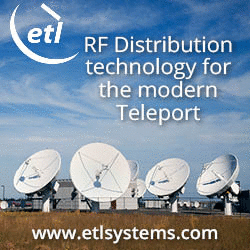|
talksatellite AMERICAS |
 |
|||||||||||||||||||||||||||||||||||||||
Daily news
|
Orbit Logic
Advances Autonomy for Satellite Self
Protection Orbit
Logic has been awarded a
four-year Space Technology Advanced
Research (STAR) Advanced Research
Announcement (ARA) contract by the
Air Force Research Laboratory (AFRL)
to develop and mature onboard
satellite software, the Autonomous
Decision Engine (ADE), in support of
the Satellite Fusion, Inference and
Response Engine (SaFIRE) program.
The ADE will enable onboard data
collection and fusion for enhanced
local area space situational/domain
awareness (SSA/SDA) as well as
onboard decision making to act
autonomously in the interest of
satellite self-protection. It is a
complete closed-loop solution that
processes raw observation data into
intelligent decisions about evasive
maneuvers and/or additional data
collection. The ADE
will be built on Orbit Logic’s
Autonomous Planning System (APS)
onboard planning/response framework.
The flexible APS autonomy
architecture enables capabilities
such as tracking of Resident Space
Objects (RSOs), behavior inference
of those RSOs, and autonomous
satellite response logic. Responsive
actions include reactive maneuvers,
threat event-cued local area search,
and local observation tasking; APS
will plan all these actions and
deconflict all resource utilization.
Moreover, APS enables collaborative
autonomy so that the satellite can
coordinate with other space- or
ground-based sensors for them to
collect additional data to refine
its RSO tracking and threat
assessment in order to make more
informed response decisions. This
contract is one avenue by which APS
– a technology created under an AFRL
SBIR contract and matured in work
with AFRL, ONR, DARPA, and NASA –
has transitioned from an elementary
research and development technology
to a deployed commercial solution;
it is deployed on-orbit on a
satellite launched in June 2021 and
will fly again on an upcoming
satellite mission in 2022. Beyond
satellite self-protection and local
SSA, APS can be leveraged for
autonomous planning in any domain.
Other notable deployments of APS
include for the autonomous operation
of heterogeneous constellations of
Low Earth Orbit (LEO) satellites
with DARPA [1] ,
heterogeneous teams of unmanned
underwater/surface/aerial vehicles
(UUVs/USVs/UAVs) with the Navy [2] ,
heterogeneous swarms of rovers,
satellites, and atmospheric vehicles
for robotic Mars exploration [3] ,
and heterogeneous robotic swarms
with astronauts-in-the-loop for
Lunar exploration [4] with
NASA.
|
|
||||||||||||||||||||||||||||||||||||||
|
|
||||||||||||||||||||||||||||||||||||||||









